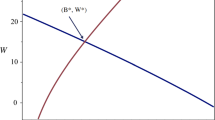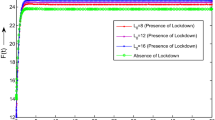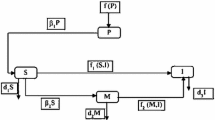Abstract.
In this paper, a mathematical model is proposed to study the depletion of resources in a forest habitat due to the increase of both population and pollution. It is shown that if the rate of pollutant emission into the environment is either population dependent, constant, or periodic, the equilibrium biomass density of the resource settles down to a lower equilibrium than its original carrying capacity, the magnitude of which decreases as the equilibrium levels of the density of population and the concentration of pollutant increase. However, in the case of an instantaneous spill of pollutant into the environment, the equilibrium biomass density decreases with the increase of the equilibrium density of population only. It is found that if the population density and the emission rate of pollutant increase without control, the forestry resource may become extinct. A conservation model is also proposed, the analysis of which shows that the resource biomass can be maintained at a desired level by conserving the forestry resource and by controlling the growth of population and the emission rate of pollutant in the habitat.
Similar content being viewed by others
Author information
Authors and Affiliations
Additional information
Received 1 June 1993; received in revised form 1 January 1997
Rights and permissions
About this article
Cite this article
Shukla, J., Dubey, B. Modelling the depletion and conservation of forestry resources: effects of population and pollution. J Math Biol 36, 71–94 (1997). https://doi.org/10.1007/s002850050091
Issue Date:
DOI: https://doi.org/10.1007/s002850050091




